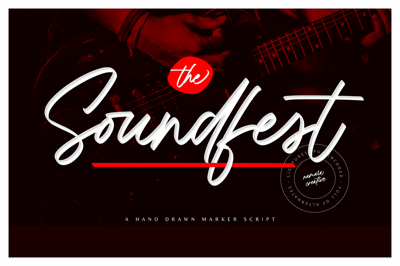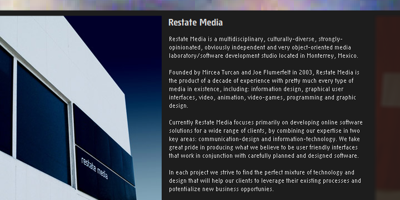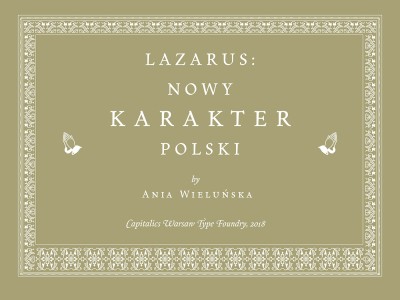Free vs. Premium Fonts: Which Should You Choose?
Free vs. Premium Fonts: Which Should You Choose?
The eternal design dilemma faces every creative professional and business owner: should you invest in premium font licenses or rely on free alternatives? This decision impacts not only your budget but also your brand's visual identity, legal compliance, and long-term design flexibility. With thousands of high-quality free font options available today alongside premium collections, making the right choice requires understanding the true costs, benefits, and limitations of each approach.
Understanding the Font Licensing Landscape
Before diving into the comparison, it's crucial to understand how font licensing works. Premium fonts require purchasing licenses that grant specific usage rights, while free font options come with various license types that may or may not permit commercial use. The licensing complexity often confuses designers and business owners, leading to costly mistakes or missed opportunities.
Commercial font licenses typically cost between $30 to $500 per font family, depending on the foundry, font complexity, and usage scope. These licenses often include multiple weights, styles, and formats optimized for different applications. However, the initial cost represents just one factor in the total value equation.
Free font licensing varies significantly across different sources. Some fonts require attribution, others restrict commercial use, and many come with open-source licenses permitting unlimited usage. Understanding these licensing nuances prevents legal complications while maximizing design possibilities within budget constraints.
The Case for Free Fonts: Quality Without Cost
Modern free font collections rival premium alternatives in quality, variety, and professional polish. Google Fonts leads this revolution, offering over 1,400 font families optimized for web use with comprehensive language support. These fonts undergo rigorous quality testing and provide reliable performance across different devices and browsers.
Advantages of Free Font Solutions:
Budget-Friendly Brand Building Startups and small businesses can create professional brand identities without significant typography investments. A carefully curated selection of free font options provides sufficient variety for most branding needs, allowing businesses to allocate resources toward other critical areas like marketing and product development.
Extensive Variety and Options The sheer volume of available free font options exceeds what most designers can afford in premium collections. From elegant serifs to modern sans-serifs, playful scripts to bold display fonts, free collections offer remarkable diversity for various design projects and brand personalities.
Legal Clarity and Peace of Mind Reputable free font sources provide clear licensing terms that eliminate legal uncertainties. Open-source licenses like SIL Open Font License grant extensive usage rights without ongoing obligations or restrictions, providing long-term security for brand investments.
Community Support and Updates Many free font projects benefit from active developer communities that provide ongoing support, bug fixes, and feature updates. This collaborative approach often results in more robust and continuously improved typefaces compared to static premium alternatives.
Web Optimization and Performance Google Fonts and similar services optimize free font delivery through global content delivery networks, ensuring fast loading times and excellent performance. This technical infrastructure would be expensive to replicate independently, making free alternatives particularly attractive for web-based applications.
Premium Fonts: Professional Polish and Exclusive Appeal
Premium fonts offer distinct advantages that justify their cost for many design projects and brand strategies. These fonts typically feature superior craftsmanship, extensive character sets, and exclusive aesthetics that help brands differentiate themselves in competitive markets.
Benefits of Premium Font Investment:
Superior Craftsmanship and Attention to Detail Professional type designers spend months or years perfecting premium fonts, resulting in exceptional character spacing, optical adjustments, and stylistic consistency. This meticulous attention to detail creates more polished and sophisticated visual communications that reflect positively on brand perception.
Comprehensive Font Families Premium fonts often include extensive families with multiple weights, widths, and styles that maintain visual consistency across various applications. A single premium font family might include 20 or more variations, providing flexibility for complex design systems while ensuring cohesive brand identity.
Exclusive Visual Identity Premium fonts help brands avoid the "template look" that can result from using widely available free font options. Exclusive typography creates distinctive brand personalities that stand out in crowded markets and communicate premium positioning to target audiences.
Professional Support and Documentation Premium font purchases typically include technical support, detailed documentation, and professional guidance for optimal implementation. This support proves invaluable for complex projects or when troubleshooting technical issues across different platforms and applications.
Advanced OpenType Features Premium fonts often include sophisticated OpenType features like ligatures, alternate characters, and contextual substitutions that enhance typography quality. These advanced features provide creative flexibility and professional polish that many free font alternatives lack.
Quality Comparison: Bridging the Gap
The quality gap between free and premium fonts has narrowed significantly in recent years. Many free font options now match or exceed the quality of premium alternatives, particularly in digital applications where technical optimization matters more than print-specific refinements.
Technical Quality Factors:
Character Set Completeness Premium fonts traditionally offered more comprehensive character sets supporting multiple languages and special symbols. However, modern free font collections increasingly provide extensive Unicode support and international character sets that meet global branding requirements.
Hinting and Screen Optimization Both free and premium fonts now feature advanced hinting that ensures optimal rendering across different screen resolutions and operating systems. Google Fonts particularly excels in web optimization, often outperforming premium alternatives in digital environments.
Kerning and Spacing Quality Professional kerning represents one area where premium fonts sometimes maintain advantages over free alternatives. However, many high-quality free font options now feature excellent spacing that performs well in most applications.
Licensing Considerations: Understanding Your Rights
Font licensing complexity creates significant considerations for both free and premium options. Understanding these legal implications helps make informed decisions that protect your business while maximizing design flexibility.
Free Font Licensing Variations:
Open Source Licenses SIL Open Font License and similar open-source options provide extensive rights including commercial use, modification, and redistribution. These licenses offer maximum flexibility while requiring minimal compliance obligations.
Creative Commons Licensing Some free font options use Creative Commons licenses with varying restrictions. CC-BY requires attribution, while CC-BY-SA includes share-alike provisions that may affect derivative works. Understanding these requirements prevents inadvertent license violations.
Custom Free Licenses Individual designers may create custom licenses for their free font releases. These licenses require careful review to understand permitted uses and any restrictions that might affect your projects.
Premium Font Licensing Models:
Desktop Licenses Traditional desktop licenses permit font installation on specified numbers of computers for design work but may restrict web use or require separate licensing for digital applications.
Web Font Licenses Dedicated web font licenses allow embedding fonts in websites with usage typically measured by monthly page views. These licenses often cost more than desktop alternatives but provide essential rights for digital branding.
Enterprise and Unlimited Licenses Large organizations often purchase enterprise licenses that provide company-wide usage rights across all applications and media. While expensive, these licenses offer comprehensive coverage and simplified compliance management.
Budget-Conscious Strategies for Font Selection
Smart font selection strategies can maximize visual impact while managing costs effectively. These approaches work particularly well for small businesses, startups, and independent designers operating with limited budgets.
Hybrid Approach Benefits: Combining carefully selected free font options with strategic premium investments creates cost-effective solutions that don't compromise design quality. Use free font alternatives for body text and secondary applications while investing in premium options for headlines and brand-critical applications.
Long-term Value Considerations: Consider fonts as long-term brand investments rather than immediate expenses. A well-chosen premium font that serves your brand for years may provide better value than frequently changing free font options that require ongoing design updates.
Scalability Planning: Choose fonts that scale with your business growth. Free font options with open licenses provide unlimited scalability, while premium fonts may require additional licensing as usage expands.
Industry-Specific Considerations
Different industries have varying typography requirements that influence the free versus premium decision. Understanding industry-specific needs helps make appropriate choices that support business objectives.
Professional Services: Law firms, consulting companies, and financial services often benefit from premium fonts that communicate authority and exclusivity. However, high-quality free font options like Source Serif Pro can provide professional appearance without licensing costs.
Creative Industries: Design agencies and creative businesses may require premium fonts to differentiate their work and avoid conflicts with client projects using similar typefaces. Unique premium fonts help creative professionals maintain distinctive visual styles.
Technology and Startups: Tech companies often prefer free font options that align with open-source philosophies while providing excellent screen performance. Google Fonts and similar collections offer modern aesthetics appropriate for innovation-focused brands.
Retail and E-commerce: Online retailers need fonts that perform well across various platforms and devices. Free font web services often provide better technical infrastructure than premium alternatives for e-commerce applications.
Making the Decision: Framework for Font Selection
Developing a systematic approach to font selection helps make objective decisions based on project requirements rather than personal preferences or arbitrary budget constraints.
Decision Criteria:
Project Scope and Longevity Short-term projects with limited budgets naturally favor free font solutions, while long-term brand investments may justify premium options. Consider how long you'll use the fonts and across how many applications.
Brand Positioning and Target Audience Luxury brands targeting affluent audiences may require premium fonts that communicate exclusivity, while mass-market brands can achieve effective communication with high-quality free font options.
Technical Requirements Complex multilingual requirements, advanced OpenType features, or specific format needs may necessitate premium solutions. However, many free font options now provide comprehensive technical capabilities.
Competitive Differentiation Brands operating in crowded markets may benefit from unique premium fonts that help stand out, while businesses in less competitive spaces can succeed with well-chosen free font alternatives.
Future-Proofing Your Typography Choices
Typography decisions impact brands for years, making future-proofing considerations essential for both free and premium font selections. Understanding technology trends and licensing evolution helps make choices that remain viable long-term.
Technology Evolution: Variable fonts represent the future of typography, offering unprecedented flexibility within single font files. Both free and premium collections increasingly offer variable font options, though premium foundries often lead innovation in this area.
Licensing Trend Analysis: Font licensing continues evolving toward more flexible and user-friendly models. Subscription services now provide access to vast premium libraries, while free font collections expand with improved quality and features.
Platform Compatibility: Ensuring fonts work across emerging platforms and devices becomes increasingly important. Free font services often adapt more quickly to new technical requirements due to their collaborative development models.
Conclusion: Strategic Font Selection for Success
The choice between free and premium fonts shouldn't be purely financial—it should align with your brand strategy, project requirements, and long-term objectives. High-quality free font options now provide professional results for many applications, while premium fonts offer unique advantages for specific use cases.
Successful typography strategies often combine both approaches strategically. Use free font solutions where they provide adequate quality and appropriate aesthetics, while investing in premium options where exclusivity, advanced features, or superior craftsmanship justify the cost.
Most importantly, prioritize font quality and appropriateness over cost considerations alone. A well-chosen free font that perfectly matches your brand personality provides infinitely more value than an expensive premium font that doesn't connect with your audience.
The democratization of high-quality typography through free font resources has leveled the playing field for small businesses and independent designers. Take advantage of these opportunities while understanding when premium investments make strategic sense for your specific needs.
Whether you choose free or premium fonts, invest time in understanding licensing requirements, testing across different applications, and ensuring long-term compatibility with your brand vision. The right typography foundation will serve your brand effectively regardless of its cost.




